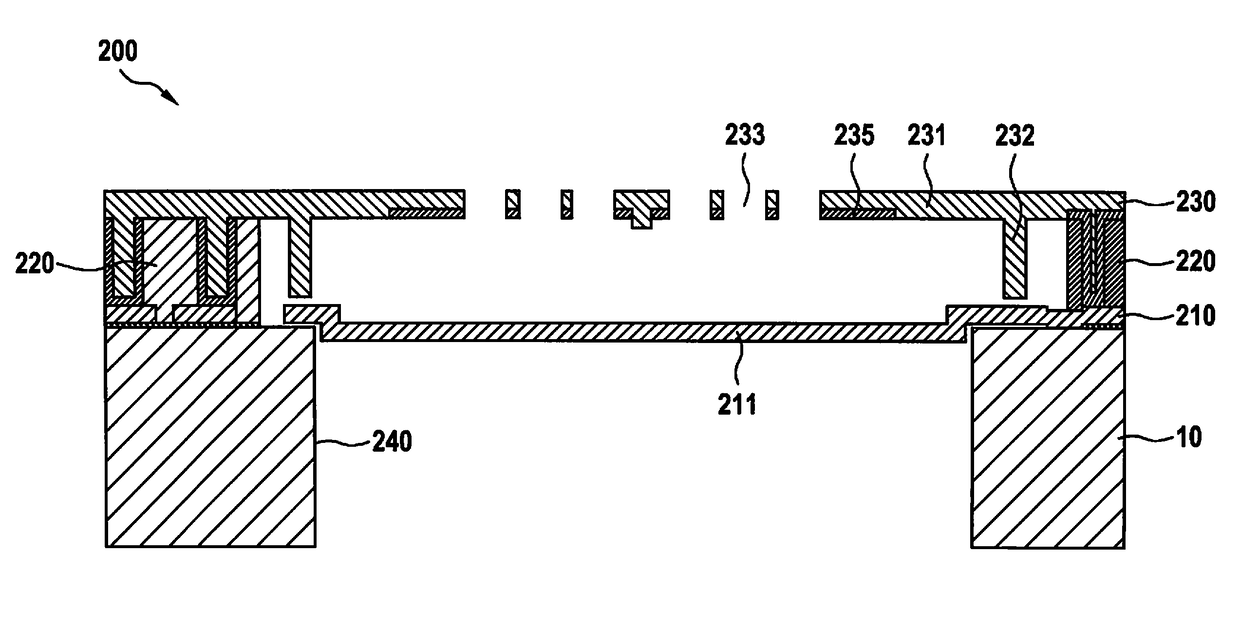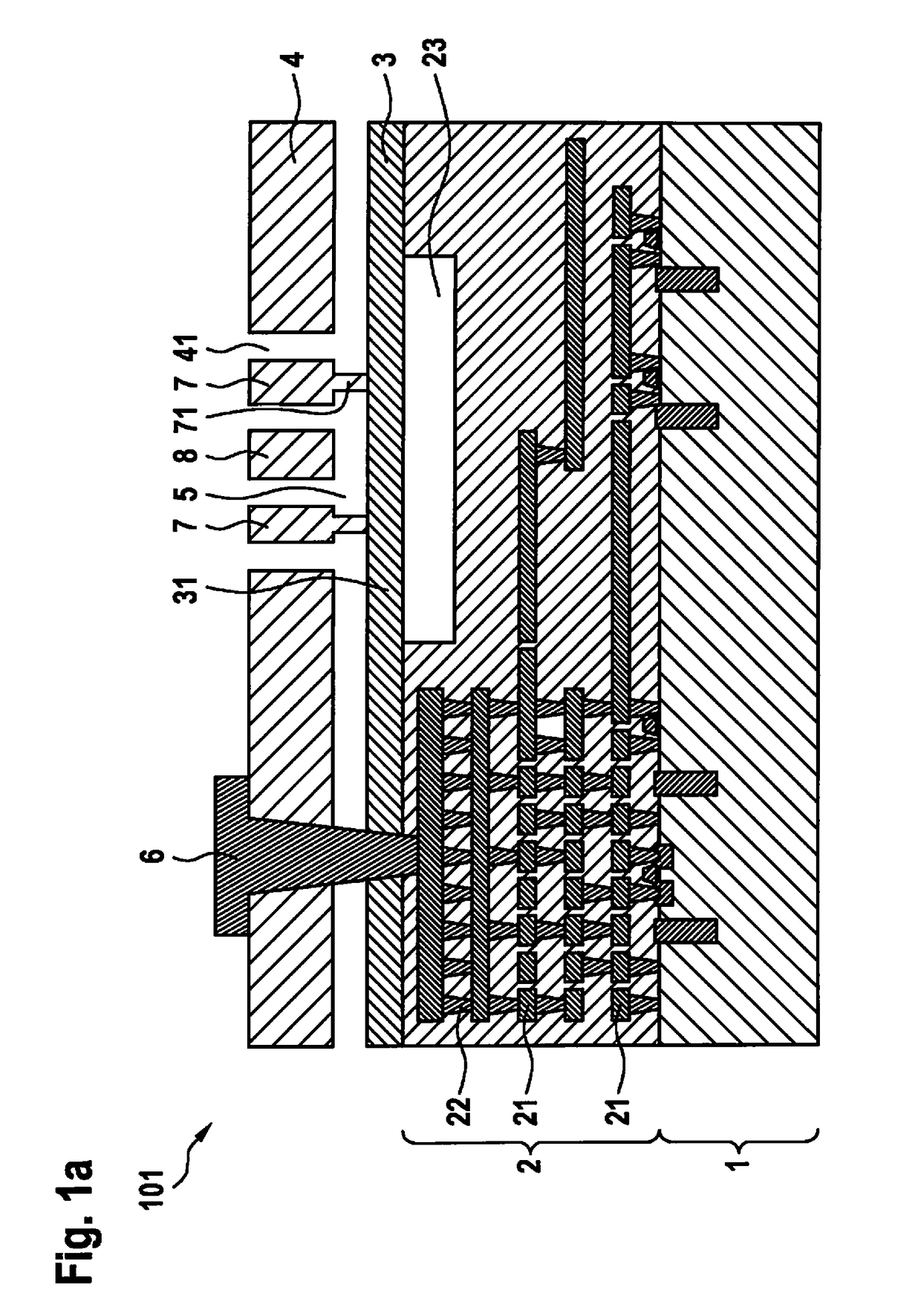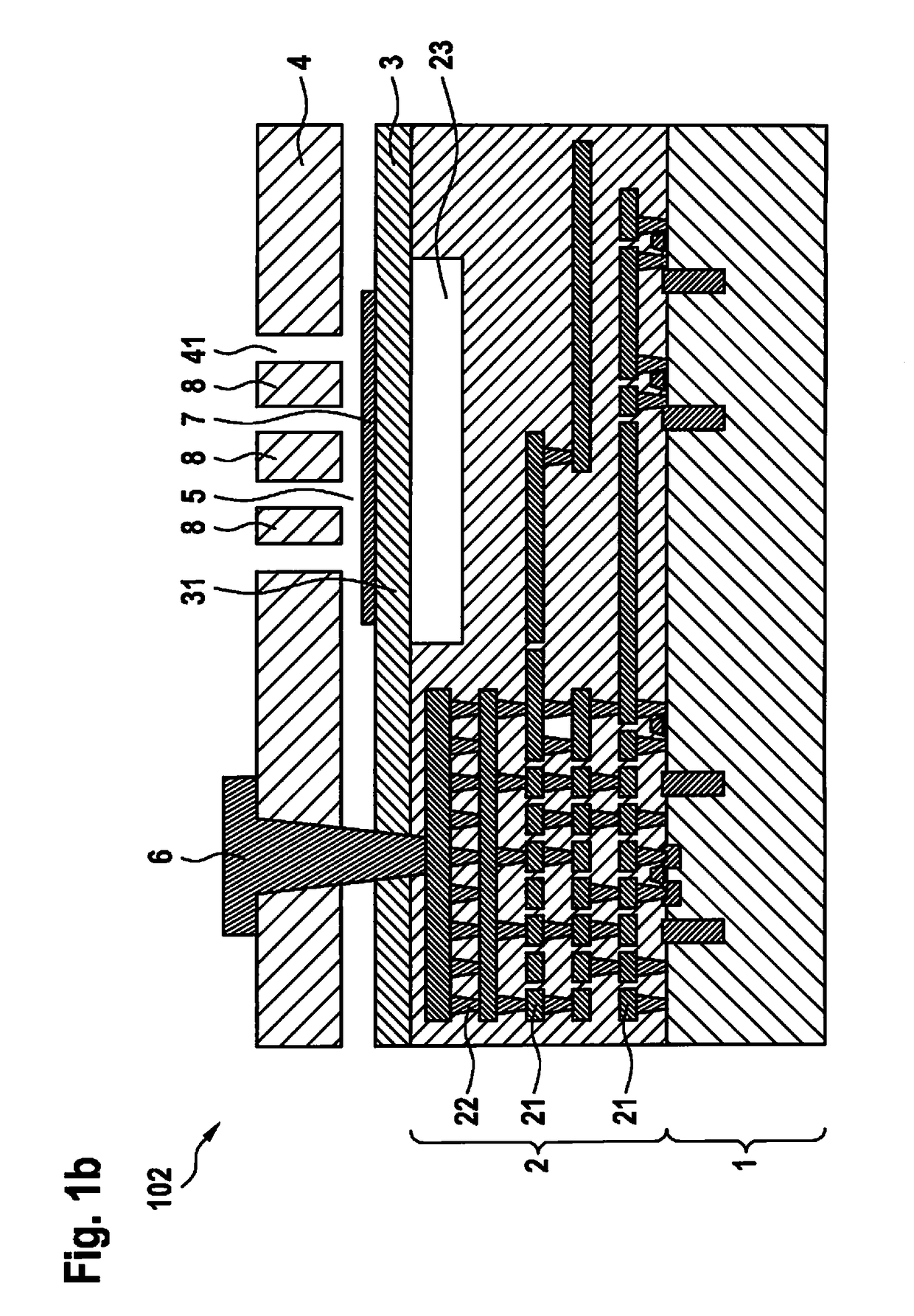MEMS component
a technology of components and components, applied in the field of components, can solve problems such as detrimental effect on the function of components, and achieve the effects of high specific resistance, high electrical insulation effect, and easy variabl
- Summary
- Abstract
- Description
- Claims
- Application Information
AI Technical Summary
Benefits of technology
Problems solved by technology
Method used
Image
Examples
Embodiment Construction
[0021]The layer structure of the two components 101 and 102 shown in FIGS. 1a and 1b is based on a respective CMOS substrate 1 into which circuit functionalities (not shown here in detail) are integrated. They are connected to each other via a back-end stack 2 having multiple wiring planes 21 and through contacts 22 between wiring planes 21 and are electrically contactable. In the exemplary embodiment shown, the electrical contacting takes place by way of a through contact 6, which extends from the front side of the component to the uppermost wiring plane of back-end stack 2.
[0022]Situated on back-end stack 2 is a relatively thin layer 3 based on silicon carbonitride in which a self-supporting pressure diaphragm 31 is developed. It spans a cavity 23 in back-end stack 2. The layer structure of components 101 and 102 furthermore includes a relatively thick functional layer 4, which is structured in the region above pressure diaphragm 31. Functional layer 4 was provided with through ho...
PUM
 Login to View More
Login to View More Abstract
Description
Claims
Application Information
 Login to View More
Login to View More - R&D
- Intellectual Property
- Life Sciences
- Materials
- Tech Scout
- Unparalleled Data Quality
- Higher Quality Content
- 60% Fewer Hallucinations
Browse by: Latest US Patents, China's latest patents, Technical Efficacy Thesaurus, Application Domain, Technology Topic, Popular Technical Reports.
© 2025 PatSnap. All rights reserved.Legal|Privacy policy|Modern Slavery Act Transparency Statement|Sitemap|About US| Contact US: help@patsnap.com



